Seppe
Structural
- Mar 8, 2016
- 53
Continue...
Previous thread (Part 06)
[link ]
[/url]
Previous thread (Part 06)
[link ]
[/url]
Follow along with the video below to see how to install our site as a web app on your home screen.
Note: This feature may not be available in some browsers.
For example:Tropmet said:There has been a lot of telephone game and paraphrasing of witness statements both in the media and on this thread - but because they were on the spot what they saw and experienced is extremely important and needs to be accurately documented.
It seems pretty conclusive that the building had collapsed by then.Tropmet said:First, Cassondra was on her balcony (which afforded a clear view of the pool deck) at 1:30am, upset, and calling her husband in D.C, waking him up.
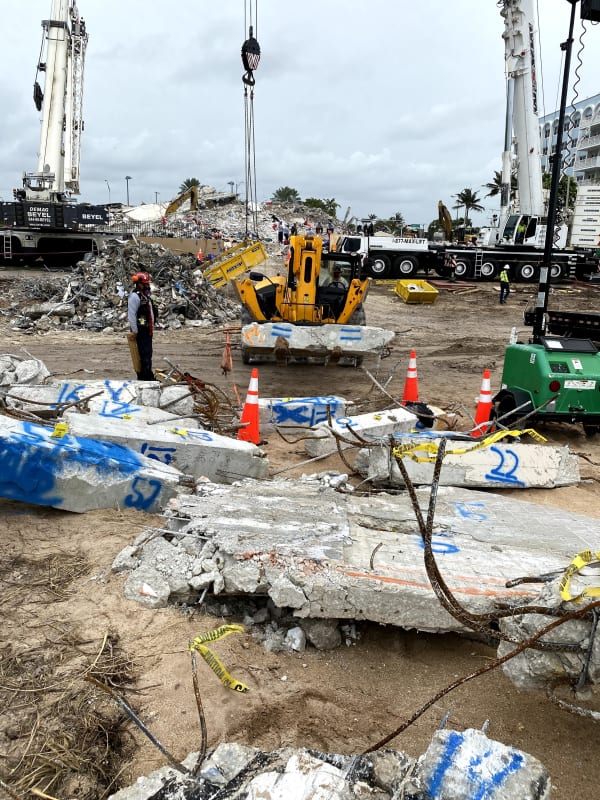
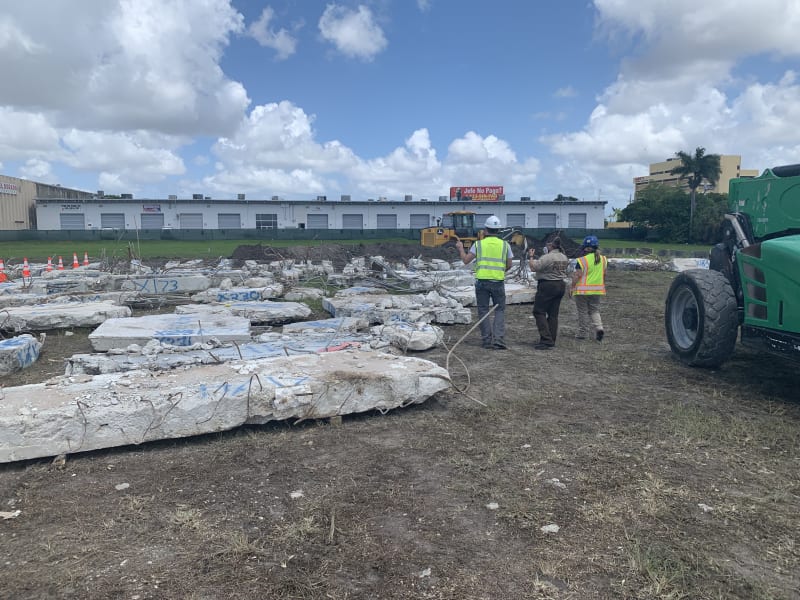

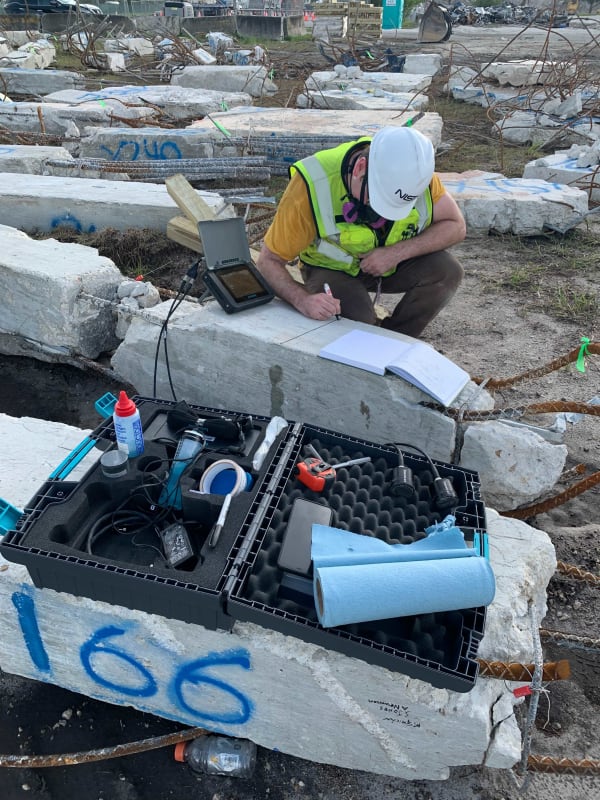
MaudSTL said:This is incorrect. They did not see the garage ceiling collapse. Instead, they heard a loud noise while swimming in the pool, got out and went over, and then saw rubble and a gushing pipe in the garage entrance. Adriana Sarmiento started videoing at 1:18 am.
LinkMikeJ65 said:Possible punch shear and more bad concrete under a planter? Any thoughts?
microwizard (Computer)19 Jul 21 16:59 Witness statements are notoriously inaccurate. What is reported in the media is rarely what the person actually said said:[/quote
At this point it’s pretty clear that the collapse of the building was preceded by the collapse of the pool deck. As to whether the pool deck failed spontaneously or it’s failure was caused by something falling from the roof is very much an open question. I don’t know why people seem to be certain of one or the other of these scenarios as they are both plausible and supported by plenty of circumstantial evidence. I look at the first second of the surveillance video which seems to show a missing section of the parapet along the roofline prior to the main collapse. We know from the plans that the parapet connection to the roof deck was very weak and it wouldn’t take much to knock it off the roof. As to the spontaneous punching shear failure, I’m less certain. I’ve inspected, analyzed, and designed reinforced concrete structures in coastal areas for more than 20 years and what I’ve seen is that usually a failure like what happened with the pool deck would be preceded many days of heavy, noticeable, cracking and abnormal deflections. Another thing that my experience has shown is that usually in these cases the original flawed design is a major contributing factor. I looked at the plans early on and found at least half a dozen mistakes.
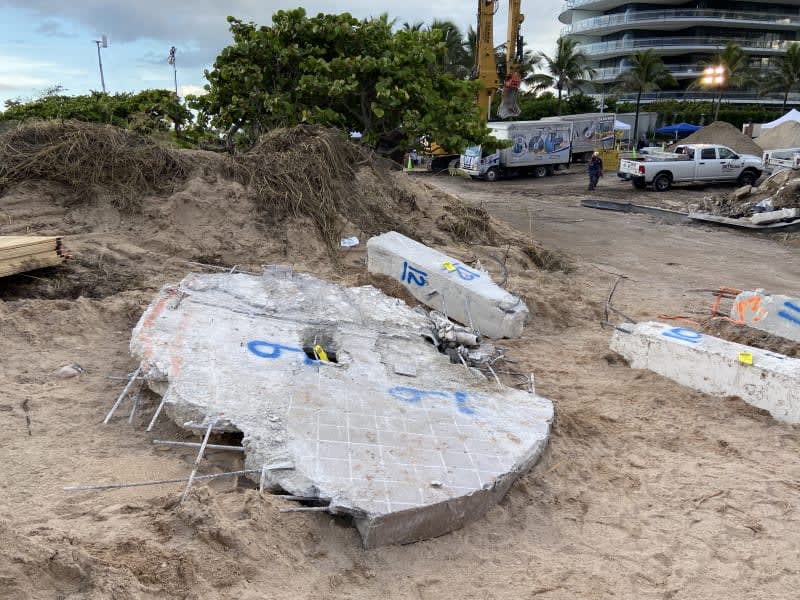
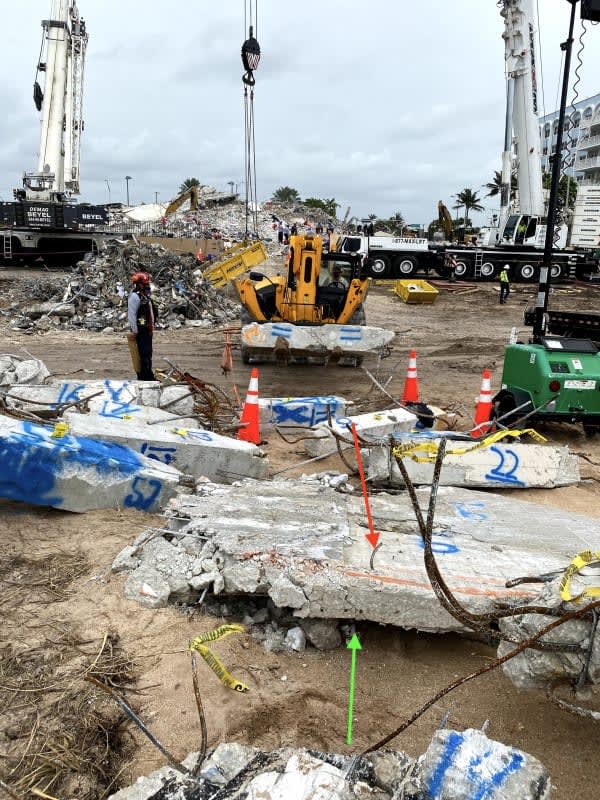
Tropmet said:I found it telling that scattered among different news articles both Nir siblings had similar observations and timelines.
MaudSTL said:The primary source interview we have so far with Nico Vazquez in the garage and lobby is his Spanish WhatsApp statement, which he made on return to Argentina. So by that time he and Gimena Accardi had had time to process individually and as a cohort with a shared experience.
Like what? To protect the structural engineering firm that had been contracted for more than $500,000 to analyze the structure and design repairs?dik said:and they should investigate the reasons for toppling the rest of the building to see if there are any other reasons than safety...
You make excellent points about snapshot/narrative and cohorts, though to me it's clear Gabe and Chani are English native. Only their mother isn't. Times of Israel is a news aggregator; sometimes editors at such sites will add their own spin... but their primary source could as well have been Channel 13 Tampa (Fox) or Orlando (Spectrum/radio).MaudSTL (Computer) said:.. and Channel 13 in Israel (Gabe,) which is reported on by the Times of Israel. I think the Israeli Channel 13 interview is important, because Gabe had had time to process his experience and he would have been speaking in his first language, Hebrew.
